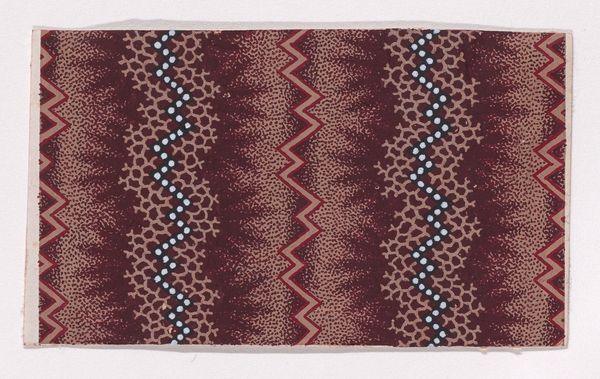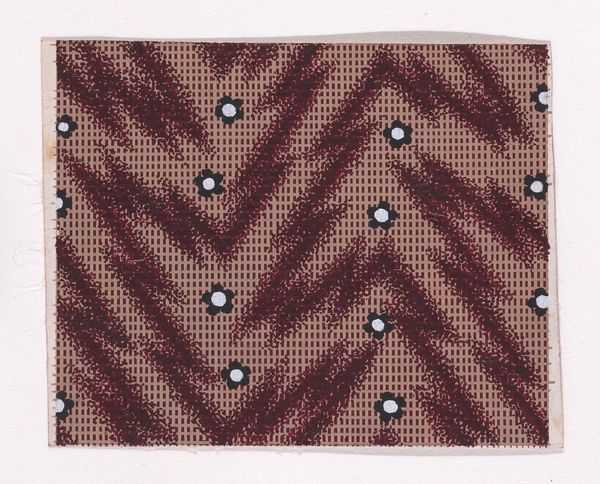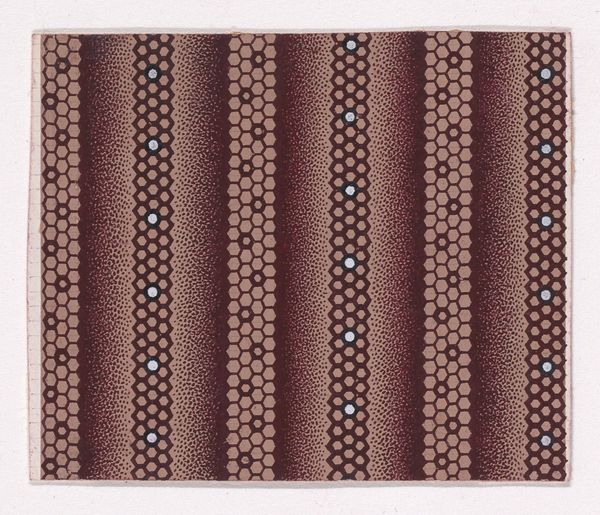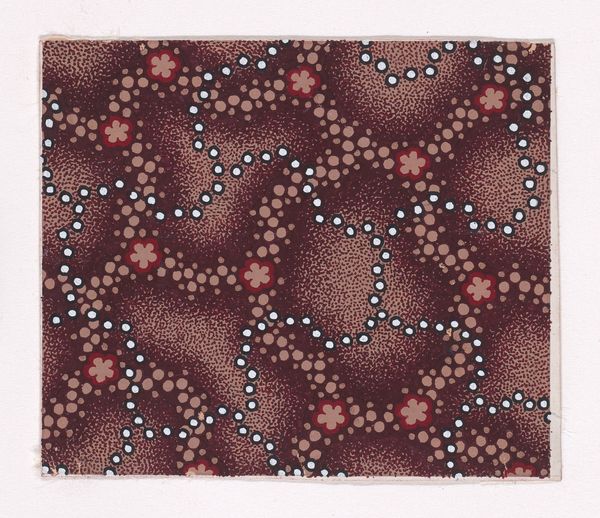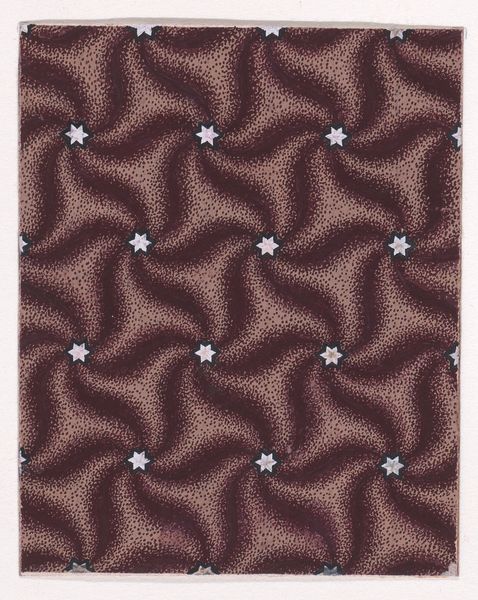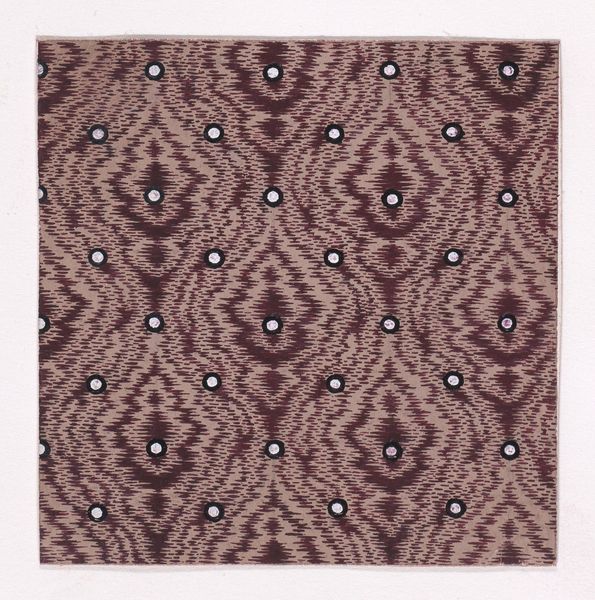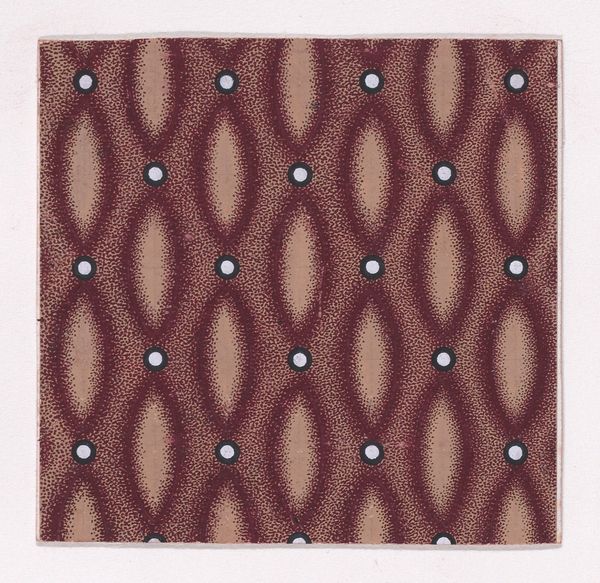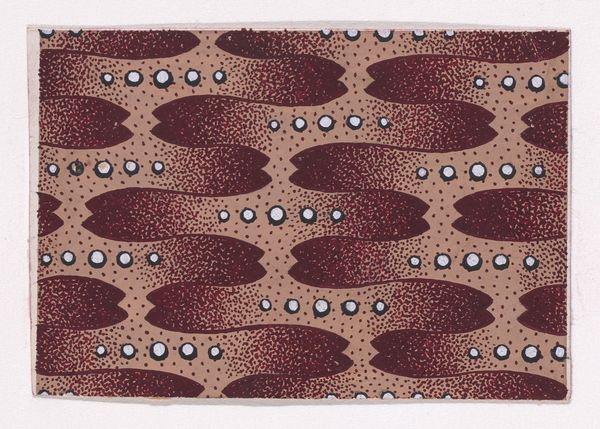
Textile Design with Undulating Horizontal Zig-Zagging Lines and Alternating Rows of Lozenges 1840
0:00
0:00
drawing, print, textile
#
drawing
# print
#
textile
#
pattern design
#
abstract pattern
#
geometric
#
abstraction
#
pattern repetition
#
textile design
#
decorative-art
#
imprinted textile
Dimensions: Sheet: 4 in. × 4 13/16 in. (10.1 × 12.2 cm)
Copyright: Public Domain
Editor: So, this is an anonymous textile design from 1840. It’s currently held at the Met, and it looks to be some sort of drawing or print intended for textile production, perhaps? All these zig-zag lines and lozenges make it feel almost dizzying to look at! What can you tell me about it? Curator: Well, let's think about what this design *does*. Mass production was really taking off in the 1840s. A design like this isn't just art for art's sake; it's a blueprint for a product, created for a specific manufacturing process. How does considering it in that light shift your understanding? Editor: I suppose I hadn't considered the labor involved beyond the artist. There would be so many other people involved in making it an actual bolt of fabric. It's interesting how design is separated from manufacture like that, one informs the other... Curator: Precisely! Think about the materials available then. The kind of dyes, the looms... This design is limited and enabled by its means of production. And those little diamond shapes aren’t just decoration, are they? They add to the design in a calculated way, guiding the machines and hands involved. Editor: They're like guide points. So, rather than pure decoration, this embodies the Industrial Revolution in its intent and fabrication. I never thought about design that way, focusing on the 'how' and 'why' it would be produced en masse. It's fascinating to consider. Curator: It changes our understanding of art and labor. Seeing a textile as a collaborative product between design and manufacture, blurring the lines of traditional "art."
Comments
No comments
Be the first to comment and join the conversation on the ultimate creative platform.
